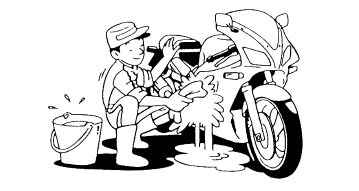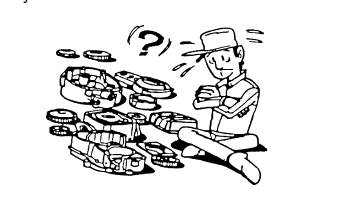Yamaha YZF-R125 Service Manual: Preparation for removal and disassembly
1. Before removal and disassembly, remove all dirt, mud, dust and foreign material.

2. Use only the proper tools and cleaning equipment.
Refer to "SPECIAL TOOLS" on page 1-8.
3. When disassembling, always keep mated parts together. This includes gears, cylinders, pistons and other parts that have been "mated" through normal wear. Mated parts must always be reused or replaced as an assembly.

4. During disassembly, clean all of the parts and place them in trays in the order of disassembly.
This will speed up assembly and allow for the correct installation of all parts.
5. Keep all parts away from any source of fire.
 Replacement parts
Replacement parts
Use only genuine Yamaha parts for all replacements.
Use oil and grease recommended by
Yamaha for all lubrication jobs. Other brands
may be similar in function and appearance, but
inferior in qua ...
Other materials:
Checking and adjusting the steering head
1. Stand the vehicle on a level surface
WARNINGSecurely support the vehicle so that there
is
no danger of it falling over.
NOTE:
Place the vehicle on a suitable stand so that the
front wheel is elevated.
2. Check:
Steering head
Grasp the bottom of the front fork legs an ...
Checking the starter motor
1. Check:
Commutator
Dirt Clean with 600 grit
sandpaper.
2. Measure:
Commutator diameter "a"
Out of specification Replace
the starter
motor.
3. Measure:
Mica undercut "a"
Out of specification Scrape
the mica to the
proper measurement with a hacksaw blade
...
Separating the crankcase
1. Remove:
Crankcase bolts
NOTE:
Loosen each bolt 1/4 of a turn at a time, in stages
and in the proper sequence as shown.
A. Right crankcase
B. Left crankcase
2. Turn:
Shift drum segment
NOTE:
Turn the shift drum segment "1" to the position
shown in the illustration. In this ...

